Human skin is a very important organ. Its main function is protection against adverse factors such as toxins, microbes, bacteria, and viruses. But it performs this function well only when it is healthy.
The skin on the human body has varying degrees of sensitivity. On the legs, especially below the knee, the skin is exposed to various environmental influences. Therefore, itching, flaking, and dryness most often appear in these places. There are many reasons why the skin on your feet dries out. Let's look at the main ones, and also talk about what to do if problems start with the skin on your legs.

Why is this happening
The causes that cause unpleasant symptoms on the legs can be divided into two groups: external and internal. In most cases, this is a negative environmental impact that can easily be eliminated and return the skin of the feet to its normal condition.
However, there is a possibility that the reasons why the skin below the knees dries out may be infections or diseases of the internal organs, as well as skin ailments (dermatitis, fungus, psoriasis). In these cases, you will need the help of a doctor.
External reasons
It is impossible to take into account all the factors that affect the legs. There are a lot of them. Here are the main ones:
- Very dry indoor air.
- Washing your feet with chlorinated water.
- Allergies to skin care products. They do not have to be of poor quality for unpleasant symptoms to appear. Expensive cosmetics can also contain components that are not suitable for a particular person.
- Poor nutrition, lack of vitamins and microelements.
- Frequent hair removal.
- Cloth. Too tight, constricting tights or trousers compress blood vessels, slowing down blood flow. As a result, the nutrition of the skin deteriorates. Synthetic clothing also negatively affects the skin, as it interferes with normal moisture and air exchange.
- Winter shoes (especially high boots) can also cause this. You cannot wear it for a long time, as your feet will overheat in it.
- Washing your feet with too hot water.
- Long sunbathing, solarium.
- Exposure to extremely low temperatures (for example, in winter, if a person does not wear clothing appropriate to weather conditions).
All of the above reasons are easy to eliminate. But if after this there is no improvement, you should contact a dermatologist. Perhaps dry skin on the legs is a manifestation of the disease.
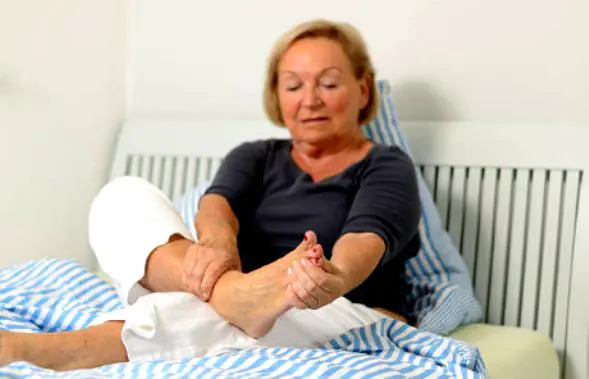
Age-related changes
As people age, irreversible changes occur in their skin. The amount of hormones that keep her in good shape decreases sharply. The structure of collagen fibers, the main building element, changes. The dermis becomes thin and dehydrated, which leads to dryness and flaking of the skin. The skin of the legs below the knees gets especially dry.
To normalize lipid and fat metabolism in tissues, it is recommended to consume more pure water. It is worth including foods high in collagen in your diet. Treat the skin of your feet with moisturizers.
Diseases
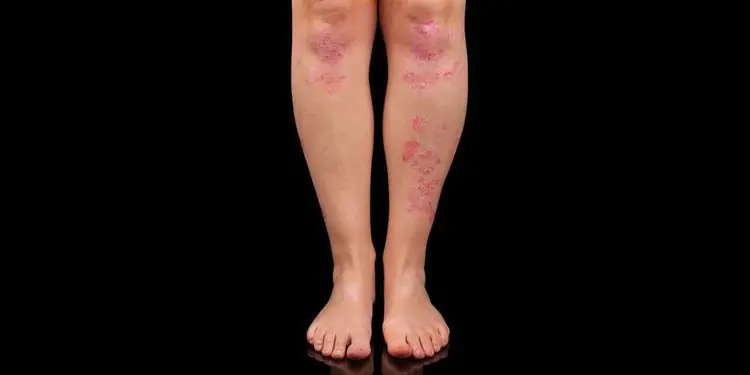
The reasons why the skin on the legs cracks and dries out may be general or local health problems:
- Eczema.
- Dermatitis.
- Psoriasis.
- Renal dysfunction.
- Liver diseases.
- Diabetes.
Of course, in this case, only medicine can solve the problem of dryness.
Infections
There are always microtraumas on the skin that are invisible and do not cause discomfort. But this is an open gate for infection, in particular for pathogenic fungi. You can become infected with them in any public place, without necessarily having contact with the carrier.
In this case, unpleasant sensations appear not only on the lower leg, but also on the foot. The area between the toes is especially susceptible to fungal diseases, as it is warm and humid there. With fungal diseases, the skin on the legs peels off. This is most often observed on the feet and between the toes.
Only a doctor can help here. Tests will need to be taken to detect infection. Based on these, treatment will be prescribed.
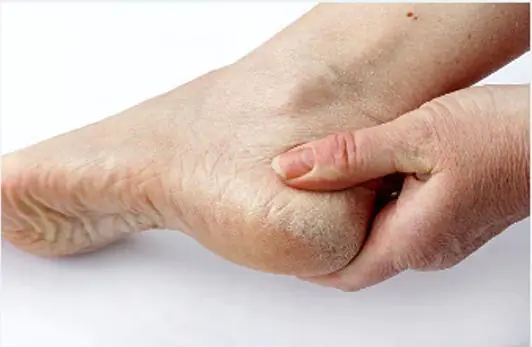
Poor nutrition
Everyone knows that healthy food is the basis of health. However, many people neglect this rule. What should be in a person's diet? Fruits and vegetables, vegetable oils, eggs, fish, seafood.
With a balanced diet, the body receives a sufficient amount of vitamins and nutrients. Their lack leads to problems. Thus, the skin on the legs becomes dry, itchy, flaky, and may crack.
Also at risk are tea, coffee and alcohol drinkers.
How to deal with unpleasant symptoms
Treating dry feet at home is very easy. You just need to be patient.
Tools at hand. If the skin on your feet is dry, you definitely need to moisturize it regularly. Any means that you have in the house are suitable for this. Cream for hands, feet or even face, vegetable oil or butter. If you have cosmetic oil, even better. The product should be applied to problem areas, allowed to absorb a little, and the residue should be removed with a napkin.
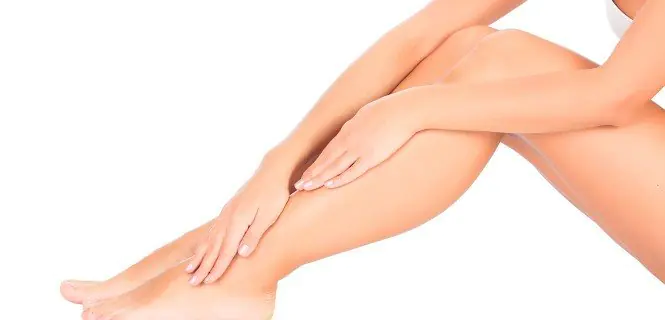
In order not to use improvised means, you need to purchase a special cream or lotion that will nourish and moisturize the skin.
Medicines. These include vitamin complexes, dietary supplements and creams sold in pharmacies. You can consult your pharmacist about purchasing these products.
More serious medications should be prescribed by a doctor. These are hormonal agents, antifungal or antibacterial drugs.
Baths. They will help if dryness occurs on the feet. You need to take a tablespoon of medicinal herbs (chamomile, calendula, sage or oak bark) and brew a glass of boiling water. Insist. When cool, strain and pour into a container. Add the required amount of water. It shouldn't be very hot.
If you are very worried about itching on your legs, you can take a bath with the same herbs.
Wrap. If you have time and desire, you can pamper your feet. Suitable for this procedure: honey or cosmetic oil. Lubricate the feet generously with the product and wrap with cling film. Then take a comfortable position sitting or lying down and wrap your legs. Leave for at least half an hour. Then wash everything off.
Depilation
In many cases, this is the reason why the skin on the legs dries out. What are the dangers of commercially available products:
- Wax strips are a fairly aggressive method of removing unwanted hair. By tearing them out by the roots, we cause great harm to the skin. Firstly, while healing, the wounds formed during such depilation can be very itchy. Secondly, it is an open gate for infection. Thirdly, the top layer of skin is “torn off” with the hairs.
- Depilatory cream is an equally traumatic method. When applied to the skin, it dissolves hairs, which are then removed with a scraper. If women have delicate skin on their legs, irritation, dryness, itching and flaking cannot be avoided.
- Epilator. This is a more gentle method, but it can also cause redness and peeling.
- The gentlest method is a razor. But its noticeable disadvantage is the fragility of the smooth legs. After all, the hairs begin to grow again immediately. At the same time, they become coarser and darker.
When self-medication is unacceptable
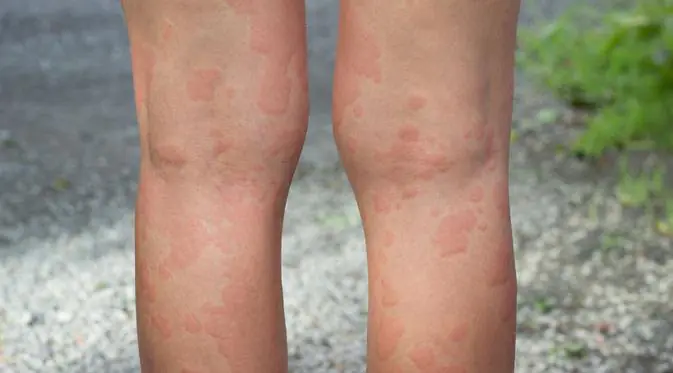
If the itching and dry skin of your feet does not go away despite all your efforts, you may need medical attention. This is especially important if the situation worsens - cracks appear from which ichor, bleeding ulcers, and pustules can be released. In these cases, you should immediately consult a doctor. He will prescribe the necessary studies to find out the cause of problems with the skin of the legs and prescribe a course of therapy.
The best creams for skin care of legs and feet
There are quite a lot of such products, both imported and domestic:
- "Zorka" Floralizin cream. The product was developed for use in private farming. They lubricated the udders of cows with it. But the natural composition and effectiveness in the fight against dryness and flaking were also enjoyed by beauties. The product contains chamomile extract, glycerin, vitamins A and E.
- "Radevit". Broad spectrum ointment. Relieves itching and inflammation, accelerates regeneration. It contains a loading dose of vitamin A, which determines its effectiveness. But this drug is prohibited for use during pregnancy.
- "Bepanten Derma". Designed specifically to soften and protect against excessive keratinization of the skin. It has a more natural composition. This cream for dry skin of the feet contains provitamin B5 (decpanthenol), allantoin, vitamin E, physiological lipids. The cream helps restore skin naturally. Penetrating into the deep layers of the dermis, it nourishes and moisturizes the skin.
- Kenyan Body Butter. Cream for moisturizing the skin of the legs and body from Ecolab. It is based on 97% natural ingredients - oils and extracts. The product does its job perfectly: moisturizes, nourishes and restores the skin. It is quickly absorbed and leaves virtually no sticky film. The only drawback this product has is the small volume of the jar.
- "D-panthenol." The active ingredient is dexpanthenol. The product has a powerful regenerating ability. This is a cheaper analogue of Bepanthen Derma cream.
Foot care rules
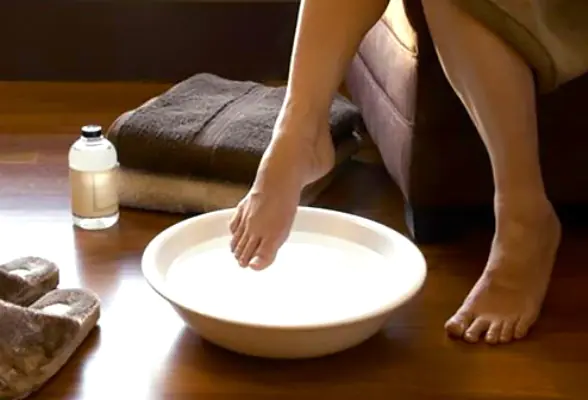
How should you take care of your feet to avoid skin problems? The rules of care are quite simple:
- Be sure to wash your feet daily. After this, wipe them dry with a towel.
- Every evening, moisturize your skin with milk, lotion or cream.
- Washing products should be chosen that are more gentle, with a neutral pH. Antibacterial soap is very drying, so it's best to save it for emergencies.
- A contrast shower will help relieve fatigue. The water should move from warm to cool.
- Exfoliate weekly to get rid of dead particles. If the skin on your legs peels off, the scrub should be delicate, and the procedure should be done more often.
Preventive measures
If the skin on your feet is dry, you need to start treating it. To prevent this phenomenon from occurring, you can regularly perform a number of simple measures:
- Drink enough water.
- In an apartment where the air is very dry, it is necessary to humidify it. This is especially true during the heating season.
- Use proven skin care products.
- Choose clothes from natural fabrics.
- Do not stay indoors for a long time wearing warm shoes.
- Wear your own slippers in the public bathhouse or sauna, as well as on the beach.
- Try to sit less and move more. If it is impossible to avoid sitting for a long time, do a warm-up every 20 minutes or just walk around. This is useful not only for the skin, but also for the general tone of the body.
- Normalize your diet. Food should be varied. You need to eat more vegetables and fruits, eliminate sweets and foods containing large amounts of caffeine.
If a person notices that the skin on the lower extremities has begun to peel and look dry and unhealthy, then they definitely need proper care. However, before starting any action, it is recommended to go for a consultation with a doctor, who will make a preliminary diagnosis and, if necessary, prescribe additional examination.
After all, it also happens that such symptoms are not only cosmetic in nature, but also signal serious disorders in the body. Human skin is a kind of protective barrier, thanks to which the body remains healthy. This becomes possible due to the fact that the skin does not allow many unfavorable factors to enter: toxins, bacteria, etc.
Initially, you need to figure out why the skin on your legs below the knees is peeling, and only then begin therapeutic or cosmetic measures to restore its normal appearance. Of course, first of all, dry skin of the lower extremities is unsightly, but this condition is often accompanied by unpleasant sensations: itching, pain, peeling, redness, burning, etc.
Causes
In total, doctors identify 5 groups of reasons why such changes occur:
- influence of external factors;
- age-related changes in the body;
- progression of chronic diseases;
- infectious lesion;
- poor nutrition.
Let's look at each point in more detail.
It’s worth saying right away that most of the factors that lead to peeling of the skin on the legs below the knees can be eliminated without much effort and specific treatment. Many people who have a fairly sensitive epidermis have peeling feet when exposed to aggressive wind, sun, cold, water and air. People with dry skin type suffer the most under such conditions.
The solution to the problem may be to use a rich cream when you go outside in frosty weather, but if it’s summer outside, then cosmetics with increased ultraviolet protection will come in handy (men should also not neglect these recommendations). If the air in the room is dry, then you need to install a humidifier or several containers of water. To humidify the air, you can wash the floors more often without wiping them dry.
If a person uses a foot cream that is not suitable for their skin type, peeling may also occur. Therefore, before buying any cosmetics, it is better to carefully read the recommendations and instructions of the manufacturer. When girls often exfoliate their legs, the function of their sebaceous glands is inhibited, so such products should be used only when absolutely necessary.
Peeling of the legs below the knees can be a symptom of the body's reaction to a food irritant. Simply put, a person has an allergy. In this case, peeling is accompanied by itching. Provocateurs can be artificial and natural materials from which clothes and shoes are made, as well as dust, animal hair, household chemicals and much more. To solve the problem, you need to limit contact with the irritant, or completely eliminate it, and also consult with your doctor about which antihistamines are best to take.
The cause of peeling legs may be insufficient fluid intake, that is, dehydration. To prevent this, you need to drink at least one and a half liters of clean water per day. If you do not heed this recommendation, gradually, starting from the shin area, the peeling will reach the thigh, and even then the process will become irreversible, and it will be impossible to cope with it.
In addition to a small amount of fluid, legs in this condition can be due to the abuse of anti-cellulite products, violation of the rules of visiting the sauna, etc.
External reasons
Your feet, or rather the skin, will not start to become dry and flaky just like that. There are many external factors that provoke the development of this condition, but their complex impact is considered the most dangerous.
Reasons of this type include:
- Excessively dry air in the living room during the heating season.
- Incorrect wearing of underwear for weight loss, stockings and socks made of synthetic materials, and especially if they still have a tightening effect, which contributes to squeezing blood vessels, poor circulation and improper nutrition of cells.
- Aggressive exposure to ultraviolet radiation, including regular visits to the solarium.
- Swimming in water with a high chlorine content (swimming pools).
- Lack of water purification filters at home.
In most cases, eliminating external negative factors is not difficult.
Age
Unfortunately, no person can influence the natural processes of the body and stop aging. After 50 years, and for some people even earlier, changes in the structure of the skin begin to occur: they become thinner, lose moisture, which leads to peeling of the legs and other areas. This condition is caused by changes in collagen fibers, which are the main building element of the epidermis.
To solve the problem, it is recommended to eat more foods that contain collagen, and also not to neglect drinking clean water, which will help normalize lipid and fat metabolism in tissues.
Infections
Peeling of the skin of the legs can occur due to the penetration of pathogenic infections and microorganisms into the epidermis. One of the most common causes is a fungal infection, which can be “caught” in any public place through contact with a carrier of the infection. In addition to dryness and flaking, the feet are very itchy, especially between the toes, involving the foot and lower leg.
For such a disease, therapy is prescribed only by a doctor, but the patient is first advised to undergo an examination with tests that will help determine the type of fungal infection.
In addition to fungus, dryness and flaking of the lower extremities can be a symptom of eczema, dermatitis, psoriasis or Kawasaki disease. Therapy should also be prescribed by a qualified dermatologist and after laboratory diagnosis.
In addition to skin diseases, itching, dryness, redness and peeling of the legs occur in the presence of concomitant pathologies, including:
Speaking about medications, it is worth noting that if a person takes a lot of hormonal drugs, then the legs can also peel very much below the knees. Similar conditions are observed with short-term or long-term use of ointments with hormones, which lead to dysfunction of the stratum corneum of the epidermis.
Nutrition
Feet can become cracked in people who neglect a balanced diet. The diet of a healthy person should always contain large quantities of fresh vegetables and fruits, vegetable oils, fish and seafood.
But if vitamin deficiency is observed in the body, then peeling of the skin below the knees cannot be avoided. Excessive consumption of drinks containing caffeine (black tea and coffee) and alcohol can also lead to a similar change in the epidermis of the leg.
Prevention
If you don’t want your feet to start cracking, peeling, or itching, then it is recommended to follow standard prevention rules. If a person visits a swimming pool, sauna, wears someone else’s slippers, or buys shoes to try on in a store, then it is recommended that he always put on disposable socks first. This way you can avoid direct contact with pathogenic bacteria, because your foot will be protected. You still can’t use the same personal hygiene items, as the fungus is transmitted very quickly.
As for the condition of the body, first of all it is necessary to promptly treat all skin diseases. You definitely need to fill your diet with healthy foods and give up fast food.
If a person is allergic, then he should take care to reduce contact with the irritant. During autumn, winter and spring, when there is a serious lack of nutrients, you need to take vitamin complexes. And always remember that low fluid intake will lead to dehydration, which in turn causes dry and flaky skin on your feet.
Girls should carefully approach the choice of cosmetics; do not neglect the suitability of skin type and recommendations for creams. If possible, it is necessary to find a replacement for peeling if peeling of the skin of the legs below the knees is observed after it.
Every woman would like to have smooth and healthy legs. A serious obstacle on the path to perfection is peeling skin on legs. If this misfortune is familiar to you, then this article is for you.
Causes of peeling skin on legs
There is an opinion that the problem of dry skin is far-fetched. However, this is not the case. Firstly, such an attack causes purely physical discomfort and anxiety. Secondly, it looks unattractive from an aesthetic point of view. And, finally, such an external cosmetic “defect” often signals to us that the body has malfunctioned internally. It is no secret that the appearance of the epidermis reflects the general condition of our body.
Internal reasons
Changes in hormonal levels. The hormone estrogen gives us youth and health. It takes part in the synthesis of collagen and elastin, which form a kind of “base” of the skin, preventing it from “sagging”. As one of the main components of the connective tissue of the dermis, collagen and elastin provide its elasticity and firmness. It has been observed that during pregnancy and menopause, the level of estrogen in the body decreases. The skin does not produce enough natural fat and often becomes dry.
Diseases of internal organs:
- hepatitis,
- chronic renal failure,
- diseases of the gastrointestinal tract and nervous system;
Long-term use of medications:
- antibiotics,
- oral contraceptives.
Avitaminosis. If we don’t get vitamins such as A, E, B with food every day, then we shouldn’t be surprised that the skin on our legs is peeling. The lack of vitamins is especially acute in the off-season and, especially, in early spring;
Errors in nutrition. We do not encourage anyone to go on a strict diet, but if dryness and itching are your reliable companions, then it would not be a bad idea to supplement your daily diet with cereals, fish and vegetable oils.
External reasons
Aggressive environment. Classic Russian winters not only test our strength every year, but also leave their mark on the skin. Under the influence of cold and piercing winds, its type changes: oily becomes normal, normal becomes dry, and dry becomes overly sensitive. In addition, if indoor air is dry, the problem becomes worse. In the summer, we do not miss the opportunity to expose our legs to the sun, we strive for the sea and... we get exactly the same thing! It is not surprising, since under the influence of dangerous ultraviolet radiation and sea salt, water from the surface of the epidermis instantly evaporates, making the skin dry and thin.
Water is our reliable friend. In city dwellers' apartments, the water is hard and also overly chlorinated. In combination with cleansing surface substances that are part of alkaline soap, shower gels and various household chemicals, the result is a truly explosive mixture.
Consequences of depilation. Depilation can give you not only the joy of contemplating your own smooth legs, but also bring you to tears. If your skin is too sensitive to wax and sugar, then you should opt for other more gentle hair removal methods. Perhaps by following this advice, you won’t have to wonder why the skin on your legs below the knees is peeling.
Clothing made from artificial materials. Each of us has several blouses, comfortable tights, favorite synthetic trousers or trendy leggings in our closet. During their constant wear, you may notice that the skin becomes thin and fragile. There are generally far fewer sebaceous glands on the extremities than on other parts of the body. Therefore, our legs and knees need especially close attention and special care.
Regardless of the cause of its appearance, one thing remains unchanged: dry feet occur where there is a relatively low level of lipids - the layer of the stratum corneum of the epidermis. If we imagine our skin as a reliable wall that protects the entire body from external threats, then its bricks will be corneocytes (scales of the upper layer of the epidermis), and the cement between the bricks will be lipids. If the level of lipids and moisture is insufficient, or if for one of the above reasons the regeneration of the skin is slowed down, the skin of the legs becomes dry.
Why does the skin on my legs above the knees peel?
- improper care: after a daily shower, we are often too lazy to pay attention to our feet, limiting ourselves to applying cream to our face. Therefore, you should not be surprised if floor-length skirts will soon appear in your wardrobe. However, if you regularly use Panthenol EVO milk with 2% Dexpanthenol and vitamin E, then you will not have to hide your beauty, and your skin will remain soft at any time of the year.
- Hives often occur during pregnancy. In this case, any relief of symptoms should only occur after consultation with a doctor;
- neurosis;
- allergic reactions. It is common knowledge that sometimes after drinking a glass of multi-colored cocktail at a party or after trying a new masterpiece of culinary art in a restaurant, a terrible itch occurs. It is very important not to scratch the problem area. It is better to try to fix the problem by applying a little body milk.
Why does the skin on my legs peel below the knees?
If you are afraid of meeting a cosmetologist like fire, and the words “sugaring” and “waxing” cause an unpleasant chill between your shoulder blades, then you probably have a razor firmly installed in your bathroom, which is one of the main problems that causes severe flaking. legs below the knees.
When carrying out a hair removal procedure with a cosmetologist, a good specialist must soothe and moisturize the irritated skin of the legs with a special product containing emollients. It would be great to do the same thing at home. Pay attention to clean-shaven men - they are familiar with the problem firsthand. Any of them must apply a soothing product after shaving in the morning to avoid irritation and dryness. Why are we often content with only hot water and soap? Meanwhile, a universal cream with panthenol can cope with the task “perfectly”. It moisturizes, has an anti-inflammatory effect and soothes irritated skin of the legs below the knees after contact with hard water and razor blades.
Modern fashion trends require not only smooth female legs without a hint of hair, but also oblige us to follow the rules of business style in clothing. A mandatory attribute of a modern woman’s wardrobe, tights and stockings prevent air from reaching the skin. They are made from artificial materials, and their constant wear creates a “greenhouse effect”, which is a fertile environment for the development of microorganisms.



